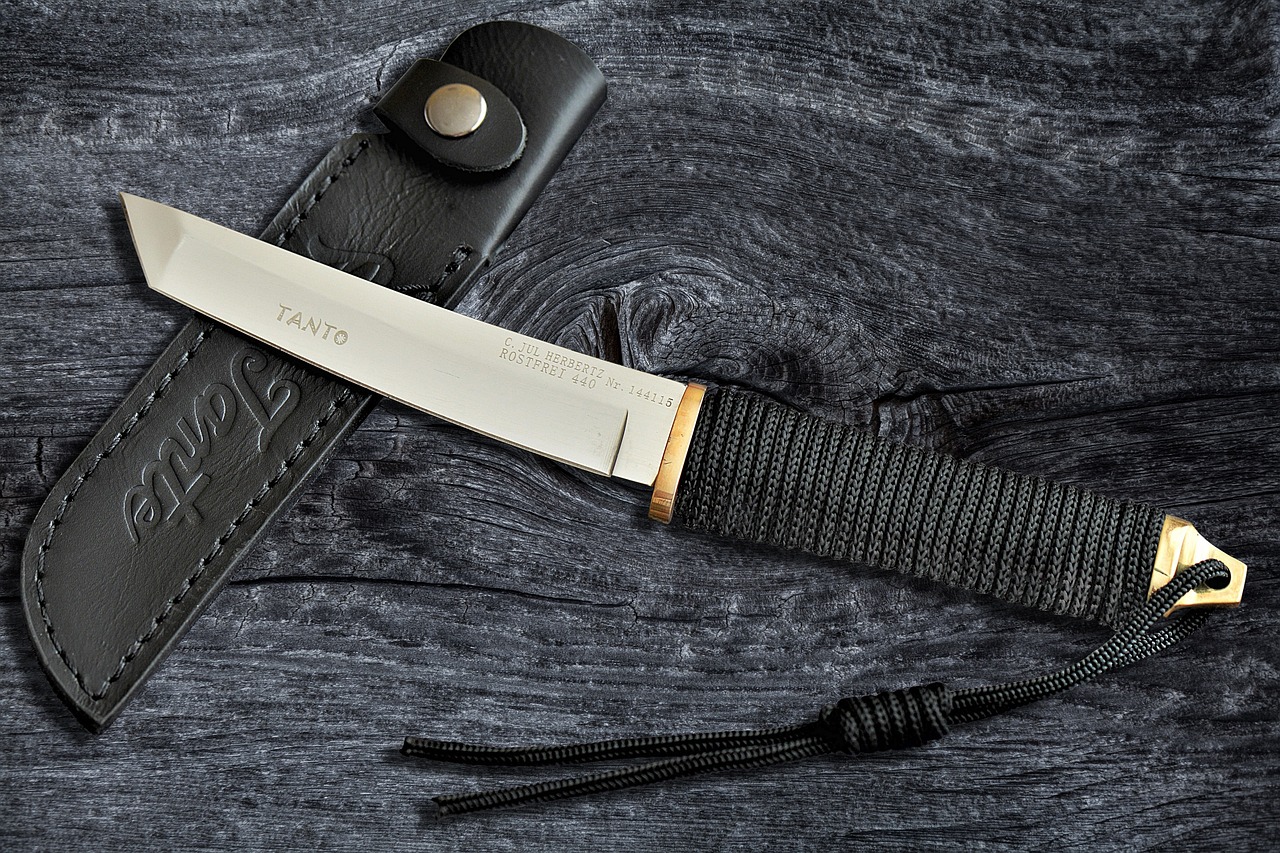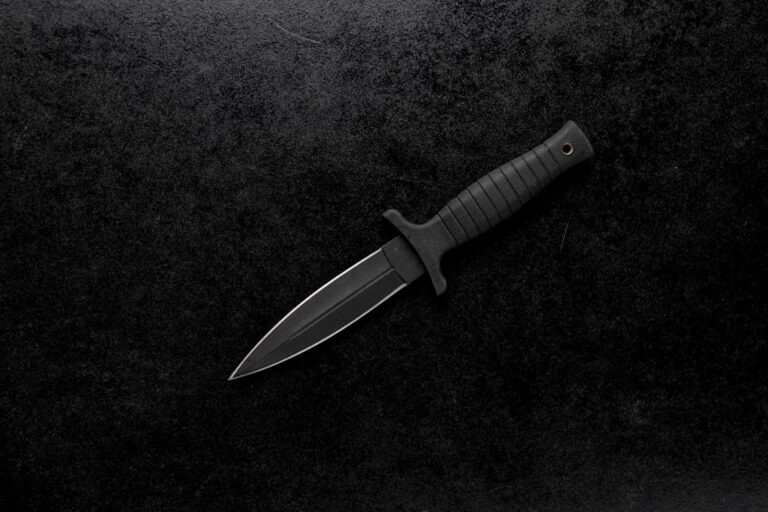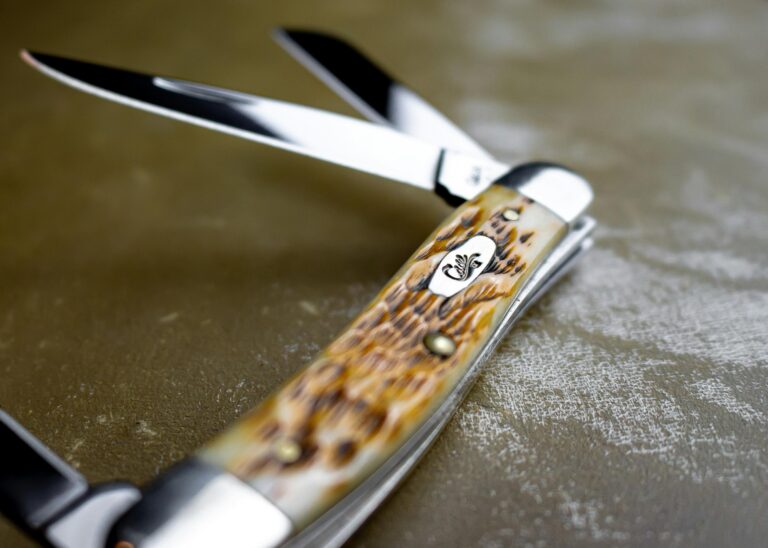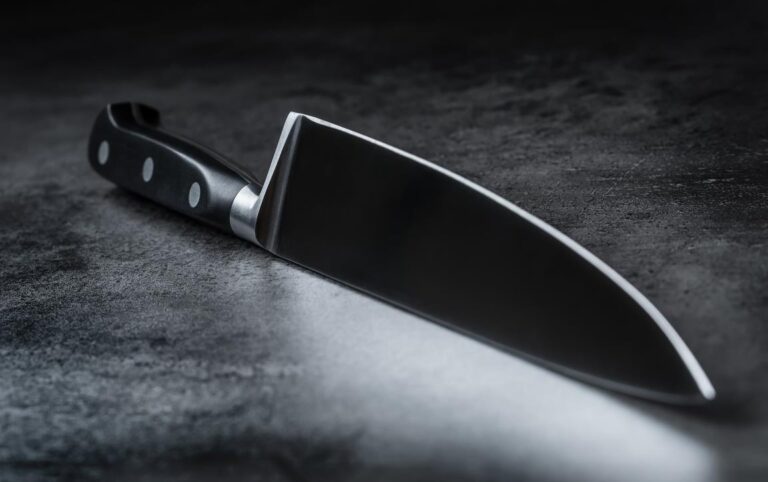Knowing the key differences between tanto and reverse tanto blade shapes helps you match the right knife to the needs of your customers. The classic tanto has a strong, angled tip and is made for piercing hard materials, while the reverse tanto features a robust tip but a spine that slopes downward, giving it an edge for control and versatility.
If you want to offer a selection that meets the demands of collectors and outdoor users, understanding these designs is essential. You’ll find that tanto blades are popular for tactical use, and reverse tanto knives are favored for their practical everyday functionality. Both styles can add value to your stock, making your offerings stand out in a competitive market.
What Is A Tanto Knife?
Traditional Japanese Tanto
- Rooted in ancient Japan, originally used by samurai as a short sword for both combat and utility.
- Typically 6–12 inches long, valued for its tough tip and straight edge.
- Features a uniquely sharp, angled tip—engineered to pierce armor and hard materials, making it reliable in close combat.
Modern Tanto (Including American Style)
- Evolves into two key styles: the classic Japanese-inspired design and the American tanto.
- American Tanto: Rose to popularity in the 1980s, with a straight edge and a more pronounced tip angle—enhancing strength for piercing tough objects.
What Is A Reverse Tanto Knife?
A reverse tanto knife features a unique blade shape where the tip slants downward from the spine, rather than up. This creates a strong, angular tip. Many knife enthusiasts find this design both practical and visually interesting.
The reverse tanto blade stands out because its tip shape is similar to a traditional tanto, but flipped.
If you handle or sell knives, it’s helpful to know that the reverse tanto appeals to both collectors and everyday users. Its durability, control, and unique look make it a top choice in the knife community.

Tanto Vs Reverse Tanto: Design
Tanto and reverse tanto are both popular blade shapes known for their strong tips and sharp-looking profiles. Understanding the key design differences will help you choose the right type for your customers’ needs and preferences.
Tip Shape
- Tanto: Features a thick, angular tip with a sharp upward slope. This creates a wide, reinforced point designed specifically for piercing hard materials and handling tough tasks.
- Reverse Tanto: Flips the tanto’s design—the spine angles downward toward the tip, forming a sharp, strong point with extra material above for added strength. This makes it ideal for controlled, precise work while maintaining piercing capability.
Edge Geometry
- Tanto: Has two distinct edge segments: a flat main edge and a short, angled secondary edge near the tip. The noticeable transition between edges enhances piercing and push-cut performance but limits effectiveness for slicing soft materials.
- Reverse Tanto: Typically has a single, sweeping edge. This continuous curve enables smoother cutting, better slicing control, and improved versatility for everyday tasks, appealing to both tactical and general users.
Tanto Vs Reverse Tanto: Pros And Cons
Choosing between Tanto and Reverse Tanto blades depends on your customers’ preferences and needs. Both shapes have unique features that stand out in the market.
Pros
Tanto Blades
- Strong, angled tip where spine and edge meet sharply, enabling powerful piercing and stabbing.
- Excellent for tactical/self-defense use; extra metal at the tip enhances durability against hard materials.
Reverse Tanto Blades
- Spine slopes toward the tip, creating a robust, blunt edge and a thick tip less prone to chipping.
- Superior control for precise cuts; versatile for everyday carry (EDC).
- Combines drop point-like functionality with added penetration strength.
Buy Wholesale Knives and Start Scaling up with Us Today
Contact us and connect with a sales rep to get a free quote.
Cons
Tanto Blades
- Sharpening the angled tip can be tricky due to its distinct geometry.
Reverse Tanto Blades
- No major inherent drawbacks, though its unique tip angle (on the blunt side, unlike tanto’s sharpened edge) may feel less intuitive for users accustomed to traditional blade shapes.
Tanto Vs Reverse Tanto: Uses And Applications
Tanto Blades
- Tactical/Self-Defense: Ideal for piercing tough materials (e.g., heavy fabric, plastic) thanks to their strong, angular tip—designed for powerful stabbing.
- Heavy-Duty Tasks: Excels at piercing hard surfaces (e.g., thick cardboard, rigid plastic) due to extra metal reinforcement at the tip.
- Specialized Food Prep: Useful for precise stabbing/cutting in kitchens (e.g., thick meats, hard vegetables).
- EDC (Everyday Carry): Reliable for tasks requiring a durable tip that holds up under pressure.
Reverse Tanto Blades
- Everyday Carry (EDC): Superior control for precise, detailed cuts (e.g., opening packages, trimming materials).
- Outdoor/Survival: Versatile for camping/survival tasks (e.g., cutting rope, preparing kindling) with a thick, chip-resistant tip.
- Military/Utility Use: Balances piercing capability with durability—less likely to snap than thinner-tipped blades (per Knife Basics).
- Collector Appeal: Modern, unique design appeals to enthusiasts alongside practical functionality.
Conclusion
When choosing between a tanto and a reverse tanto blade, you should focus on the tasks your customers need to perform. Each shape offers its own strengths based on tip design and edge shape.
Tanto blades are known for their strong, pointed tips and flat edges. These features make them good for piercing and precise cuts. They are often favored in tactical or outdoor knives.
Reverse tanto blades have a spine that slopes sharply toward the tip. This gives the blade extra strength at the tip, making it good for slicing and daily jobs. Many users find this shape offers both control and reliability.
Knife sellers should always consider the real needs of customers. Are they looking for durability, or do they need a strong, versatile cutting tool?
If you want to expand your knife business or provide unique designs, you can easily request a quote for custom blades. Finding the right supplier helps meet your customers’ needs and grow your brand.
Frequently Asked Questions
What are the advantages of a reverse tanto blade for everyday use?
A reverse tanto blade stands out because of its thick, angled tip. This shape gives extra strength for tough jobs, like piercing cardboard or plastic. The tip is less likely to break compared to thinner blade points you’ll see on some other shapes.
Many reverse tanto knives handle heavy-duty cutting well. They give you good control while slicing. This makes them useful for everyday carry, utility work, or self-defense situations. Some kitchen knives now use reverse tanto shapes due to their strong tip and sharp edge, bringing durability into food prep tasks as well.
See more about their everyday uses at this detailed guide:
https://leeknives.com/reverse-tanto-balde/
How is a wharncliffe blade different from a reverse tanto?
A wharncliffe has a straight cutting edge and a gently curved spine. This design gives you lots of control for slicing tasks and makes it easy to cut flat against surfaces. Wharncliffe tips are usually not as thick or strong as the tip of a reverse tanto, so they are less suited for piercing.
The reverse tanto stands apart with an angled, robust tip. While reverse tanto designs are optimized for piercing and tough jobs, wharncliffe blades focus on accuracy and clean slicing. For users who need a strong tip, the reverse tanto is better. But if you want safe, straight cuts, a wharncliffe excels.
What are some top-rated reverse tanto knives on the market?
Some top-rated reverse tanto knives include the Benchmade 940 and the Cold Steel American Lawman. The Benchmade 940 is famous for its slim profile and durable reverse tanto blade, making it popular for everyday carry. Cold Steel’s models, like the American Lawman, provide great value and strong blades for both work and outdoor use.
Other companies produce reverse tanto knives in different sizes and price ranges to fit your needs, whether for collection or heavy use.







